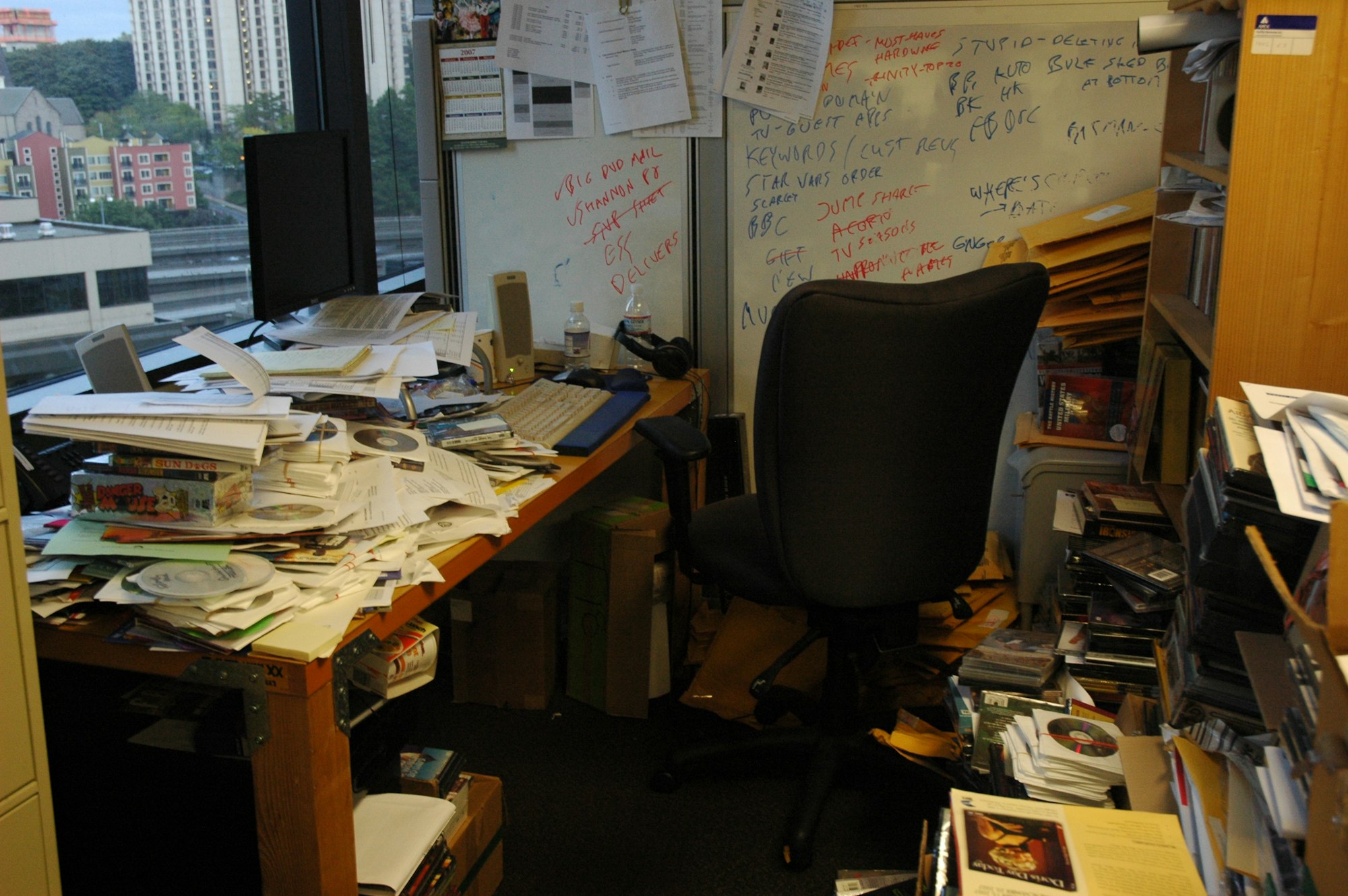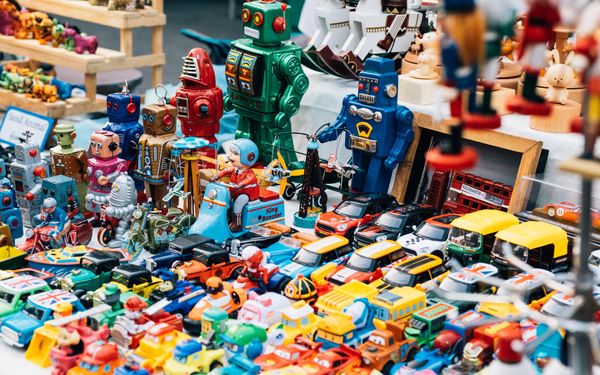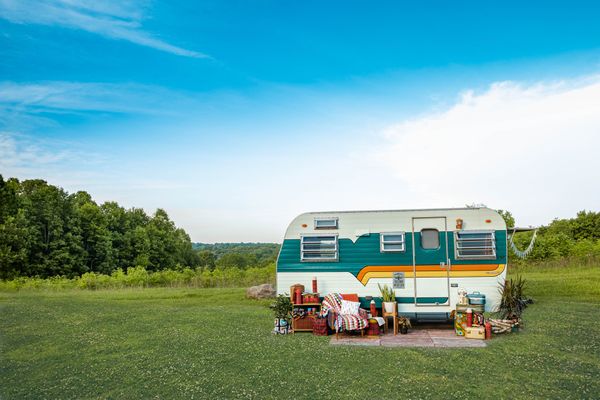Domestic Organisation
Sort Your Shit Out
I’m always looking for a change of scenery every few years and have moved thrice in the last six.
You’d think by now I’d be more organised with all my belongings, but alas, no. I seem to collect more stuff.
Every move, I’d look at boxes packed full of the things I’ve accumulated over the years and tell myself, “You are going to sort your shit out before the next move.” And without fail, life gets in the way, and come the next move, I find myself staring at that same pile (plus more), shaking my head.
This move is different. It’s a new year and a fresh start living on my own and I’m committed to making changes to raise my quality of life.
It’s not just about having a clean and tidy home. It’s discarding what’s unnecessary and organising the rest systematically so you’re not asking yourself, “Now, where did I leave that?”, then carrying that through to your digital life - that being the files and folders on your computer, emails, photos, passwords, etc.
How many of you have done something twice because you forgot you did it the first time? On the odd occasion, I’ve paid bills twice, then other times forgot to pay them altogether, reason being, I haven’t incorporated a solid foundation of good habits and systems into my life.
This blog is not only helping us learn new ideas and concepts, but also identify and rectify limiting beliefs, habits and practices to improve our quality of life.
But how can I expect it to be successful if my personal life is a disorganised mess?
If you’re looking to make things easier for yourself in the long run, what’s to follow are areas you can take action to be more organised in your home and on your devices.
Declutter

Ever been to a doctor’s office where there are piles of stuff everywhere? Some people’s brains work differently, but for many of us, it’s less stressful by not operating in a messy environment. To not have to ask yourself, “Now, where did I leave that?” and spend the next few minutes, hours or days looking for it.
I have hoarding tendencies I’m working on eliminating, an example being if something is a bargain or more cost-effective, my consideration would be how much I could reasonably store for use in the future rather than how much I would actually need or use. This has led to ridiculous purchases such as five litres of expensive car interior cleaner, the majority of which is still in the vat after who knows how many years.
Another you may be able to relate to is associating value to your belongings. I paid good money for that car cleaner only to go to waste, which is why getting rid of things is hard to do, be it due to financial or emotional associations with an item. But to move forward and grow, you have to imagine your ideal lifestyle and learn to let go of items that no longer serve a purpose.
The reality is, a lot of us have far more things than we need and having all this extra stuff is costing us:
- Time - cleaning, sorting and sometimes looking for items, plus the time involved packing and unpacking when you move;
- Stress - that overwhelming feeling of being surrounded by clutter or mess, and;
- Money - spending unnecessarily on items that sit there unused or wasted
So, if you’re like me and have cupboards and drawers filled with paperwork, USB cables and other random crap in no real organised fashion, it’s time to take stock, dispose of, donate or sell stuff you don’t need and come up with a system of organising the rest.
I sought out some of the best tips from Marie Kondo - an organising expert and tidying consultant with many valuable solutions for having a clean and organised home.
Discard first, then organise and do so by item, not room
You’re double handling and wasting time by trying to organise say a cupboard or drawer by discarding as you organise.
The recommended order of tackling your belongings is:
- Clothes
- Books
- Papers
- Miscellaneous
- Sentimental items
Start by taking everything you own of a particular category and putting them all into a pile. Create a pile of clothes on your bed, make towers with all the books you’ve got in the home. This puts things into perspective where you’re able to see how much you have of each item before deciding what stays and goes.
Ask yourself, “Do I really need this,” or as Kondo asks, “Does it spark joy?” You need to be honest with yourself and committed to eliminating unused items if you want to minimise clutter and make a change to your standard of living. How you live is a reflection of you.
Give every item a home and store by category and size
So that you don’t have drawers full of random crap, keep like items together. Using compartment storage for cupboards and drawers helps prevent them from becoming a mess. Instead of having kids toys randomised in boxes, keep large toys in one box and smaller ones in another.
I’ve taken the extra step of creating a spreadsheet detailing the storage location of all the miscellaneous items hidden away in cupboards, drawers and storage boxes. Makes for easy finding when you’re looking for something.
Use clear boxes and containers
In your cupboard, garage or storage cage it will allow you to see what’s inside and in the kitchen, see how much of each item you have left.
Store items vertically
Just as you stand books with their spine facing outwards, folding (using the Konmari fold) and stacking clothes vertically so they’re facing side out not only fits more into a drawer but allows all items to be visible whilst eliminating wrinkles caused by weight using the conventional stacking method. Arranging by colour is both pleasing to the eye and allows for seeing how many items of each colour you own.
Minimise paperwork
There should only be two categories of paperwork in your home; papers to save and papers to deal with. Everything else is online or should be stored electronically. Come up with a system. Here’s one I use:
Ever kept a receipt for warranty purposes only to find it faded months later?
Either take a photo or scan the receipt (I use Adobe Scan on my phone). Name the file appropriately - I use the date in YYYY-MMM-DD format followed by the name of the item (such as 2021 Apr 10 - microwave) and store it and the rest of your receipt scans in an appropriate folder on your computer, mobile device or in the cloud.
⩕
If you need ideas of what you can minimise in the home, here’s 101 items to get you started.
Ikea was the first place that came to mind for storage solutions, but you’ll find similar items on eBay, other online and retail stores.
I mentioned compartment storage above for arranging cupboards and drawers. Also worth considering are containers for unused spaces such as high cupboard shelves or underneath the bed.
For the kitchen pantry, the common theme is to group similar items with those closest to their use-by date towards the front. Baskets and containers can be implemented for grouping similar items.
And for your garage or shed, there are plenty of ideas online including this DIY solution shown by Monica.
For many of us, decluttering will take some time - a number of days to go through everything, one category at a time. It requires effort and discipline but will pay off tenfold in the long run.
Organising Your Digital Life

“The pieces of technology we use every day are only as valuable as we make them”
This subtitle was originally a post I wrote that did not make the blog. In it, I discussed how to best use tools available to us such as the calendar, note-taking and storage apps on our devices. But in this post, we’re focusing on minimising and sorting through our stuff.
Do you:
- Have a desktop or downloads folder full of files you’ve accumulated?
- Have thousands of unread or unsorted emails in your inbox?
- Waste money on cloud storage because your hoarding habits have extended to your digital space?
- Use the same password for multiple websites?
Your files - be they on your computer or in the cloud can be cleaned out and sorted just as you would do with the items in your home. Delete unnecessary files and invest in an external hard drive to back up important items. A costly mishap could result in the loss of everything unsaved, and it’s not a good idea to 100% rely on the cloud.
Incorporate your own system for file management so that you have a routine to periodically go through, backup and delete unnecessary files. Alternatively, backup services are available on both Apple and Windows systems that save all files on the drives you select, that way deleting unnecessary files periodically is all you’ll need to do.
As with your computer files, take stock of all your emails if you don’t do so regularly as you’ll reduce the cloud space you use. These best practice tips from Hiver are thorough in helping your email management.
⩕
If you’ve read my post on getting things done, you’ll recognise not to rely on your brain to remember everything and instead write it down. The calendar app on your phone can do so much more than tell you the date. Incorporate it into your day to day to:
- Outline your list of things to do, be they one-off or periodical tasks such as making payments by their due date, cancelling a service before the next due payment or regularly backing up the files on your computer.
- Remind you of appointments, meetings or social events you’re attending. If you input the address of where you need to be, your phone will remind you when to leave based on your current location.
Why rely on your brain to remember all these things when you can write things down and be reminded when your attention is required? Maybe you’ve had instances where you’ve got so many things to do that you find yourself standing there, staring into space pondering what needs to be done first. You’re wasting time and energy. Maximise your potential and use these tools available to you to get the most out of each day.
⩕
Password security is important, as using the same or easy passwords open you up to painful things you want to avoid such as identity theft.
A strong password is one with twelve random characters and symbols. How can you expect to remember all of them? Password managers are your best solution as you’ll only need to remember the master password; the rest being created and stored within the app. LastPass has been my choice for years, but I make a habit to write down important passwords in a notebook. You’re only asking for trouble by keeping passwords in a document on your computer.
Yes, the chances of anything happening if you continue to use weak passwords is slim. How many of you have never made an insurance claim after years of paying for it? But as is said, prevention is better than cure. By consolidating passwords, you’re taking steps to protect yourself digitally, something many of us take for granted yet can have great consequences if something goes awry, so don’t wait until it’s too late.
Conclusion
For some, following through on these actions will make a significant change in your quality of life. Don’t put it in the too-hard basket and procrastinate, otherwise nothing will change. You deserve better.
We all like the feeling of clean, fresh sheets on our bed. Imagine what your home (and computer) will feel like when you give it the same treatment.
Look at it the same way as I do - this is a spring clean to turn a new leaf, start a new chapter; a new and improved you. It might just kickstart your motivation to be something greater in another area of your life, so what have you got to lose?



